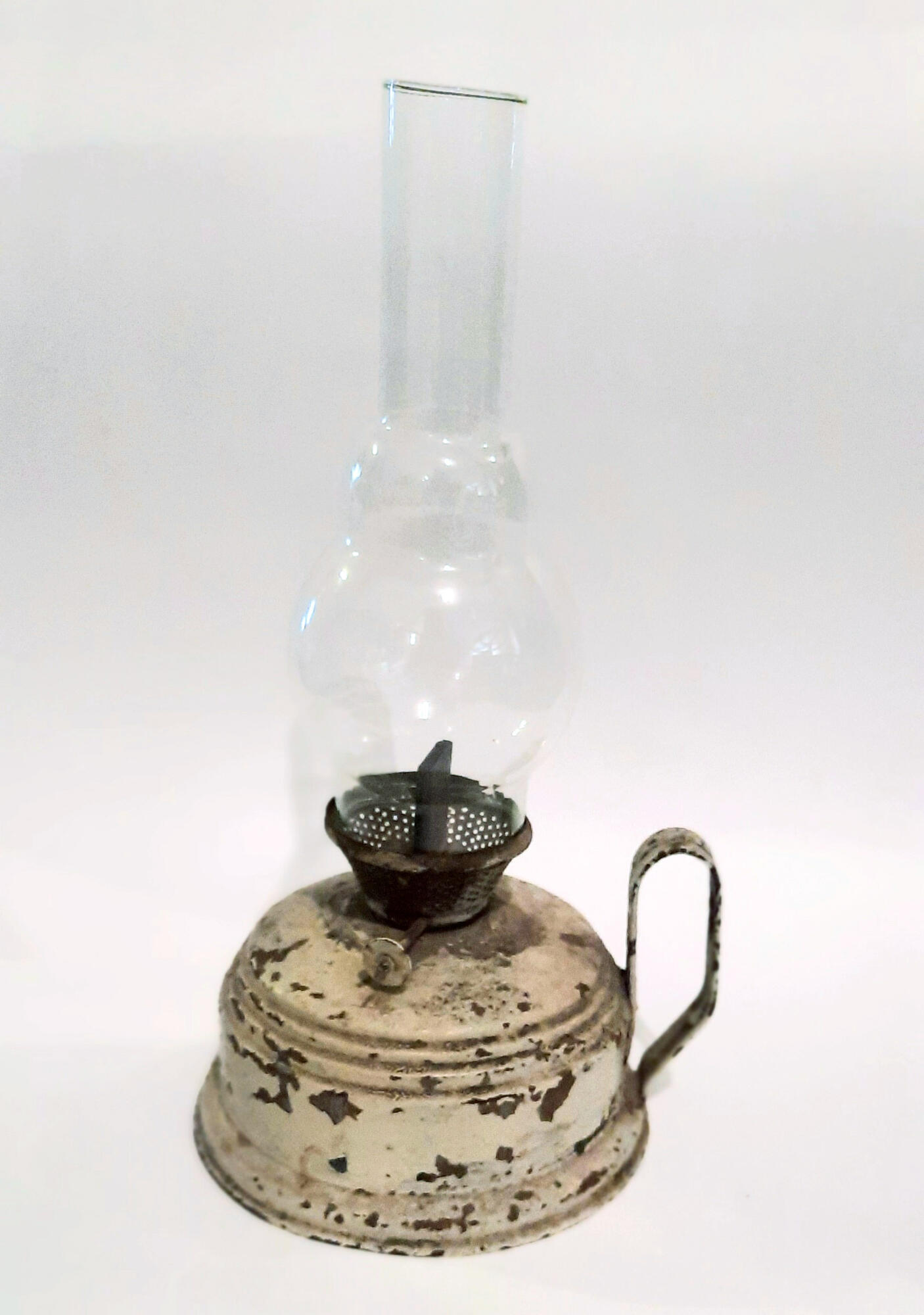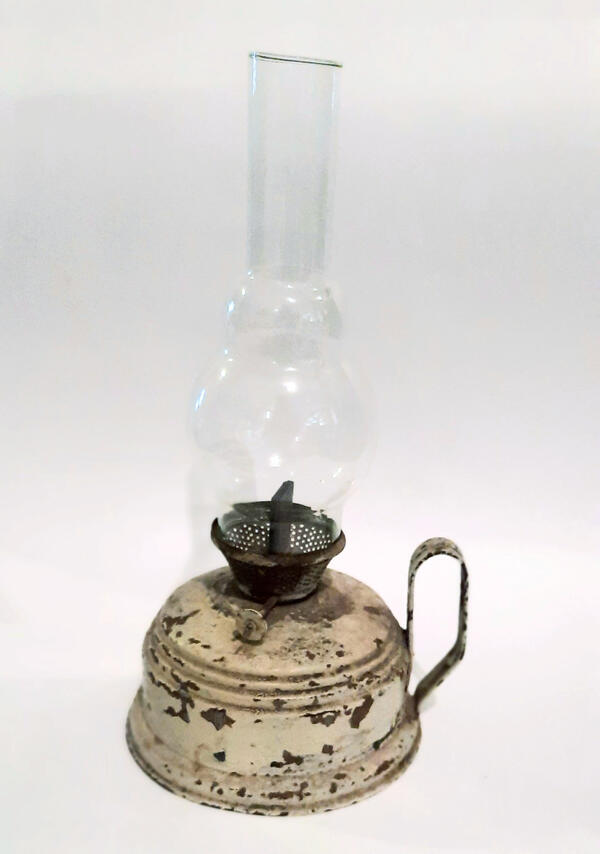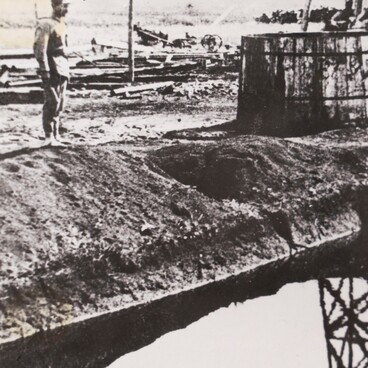This is a kerosene lamp, a type of lighting device that uses kerosene as fuel. These lamps were popular from the 19th to the early 20th century and were often used in BashkIr lands. After electric lighting became widely available, they mainly stayed in use in places that have no access to electricity. They can also serve as a light source during emergencies. The base of this lamp is made of metal. It is shaped like a cylinder that is rounded towards the top and has a metal handle welded to its side. The lamp is crowned with a glass chimney.
The first prototype of a kerosene lamp, the oil lamp, was described by Persian scientist Abu Bakr Muhammad Al Razi in the 9th century. Although hydrocarbon processing had already been discovered at the time, and light distillates were already available, such lamps were not widely used then. Until the mid-19th century, lighting was dominated by oil lamps that were fueled with vegetable and animal fats. By the early 19th century, the development of oil lamps led to the emergence of complex designs with an increased flame area, pressurized oil supply, and improved combustion efficiency.
Once oil was replaced with kerosene, it instantly decreased the rate of residue formation inside the lamps, as well as increased their brightness. The high fluidity and volatility of kerosene led to simplified designs of oil lamps that bypassed pressurized oil supply to the lamp’s flame area. The first historical record describing the use of kerosene for lighting dates back to 1846 when Canadian physicist and geologist Abraham Gesner proposed using this product of coal distillation for the purpose of lighting, pointing out the obvious advantages of this new fuel: improved brightness and stability of the flame.
Today, it is difficult to make a clear distinction between oil and kerosene lamps. Nevertheless, it is believed that the first kerosene lamps were introduced in 1853. That is when Austrian pharmacists Ignacy Lukasiewicz and John Zeh started using kerosene in their improved oil lamp in Lviv. That same year, Rudolf Ditmar of Vienna proposed his original design of a flat-wick kerosene burner. His design became the precursor to kerosene lamps, the mass production of which began in the United States in 1856.
Traditionally, the size of kerosene lamps, as well as their chimneys and wicks is measured in lines. For instance, if the base diameter of a lamp’s chimney is 20 lines, it means that it is equal to 50.8 millimeters. In Russia, lamps with a wick width of 7 lines, or about 18 millimeters, were even called ‘semilineykas, ’ which literally translates to ‘seven lines.’
The first prototype of a kerosene lamp, the oil lamp, was described by Persian scientist Abu Bakr Muhammad Al Razi in the 9th century. Although hydrocarbon processing had already been discovered at the time, and light distillates were already available, such lamps were not widely used then. Until the mid-19th century, lighting was dominated by oil lamps that were fueled with vegetable and animal fats. By the early 19th century, the development of oil lamps led to the emergence of complex designs with an increased flame area, pressurized oil supply, and improved combustion efficiency.
Once oil was replaced with kerosene, it instantly decreased the rate of residue formation inside the lamps, as well as increased their brightness. The high fluidity and volatility of kerosene led to simplified designs of oil lamps that bypassed pressurized oil supply to the lamp’s flame area. The first historical record describing the use of kerosene for lighting dates back to 1846 when Canadian physicist and geologist Abraham Gesner proposed using this product of coal distillation for the purpose of lighting, pointing out the obvious advantages of this new fuel: improved brightness and stability of the flame.
Today, it is difficult to make a clear distinction between oil and kerosene lamps. Nevertheless, it is believed that the first kerosene lamps were introduced in 1853. That is when Austrian pharmacists Ignacy Lukasiewicz and John Zeh started using kerosene in their improved oil lamp in Lviv. That same year, Rudolf Ditmar of Vienna proposed his original design of a flat-wick kerosene burner. His design became the precursor to kerosene lamps, the mass production of which began in the United States in 1856.
Traditionally, the size of kerosene lamps, as well as their chimneys and wicks is measured in lines. For instance, if the base diameter of a lamp’s chimney is 20 lines, it means that it is equal to 50.8 millimeters. In Russia, lamps with a wick width of 7 lines, or about 18 millimeters, were even called ‘semilineykas, ’ which literally translates to ‘seven lines.’



